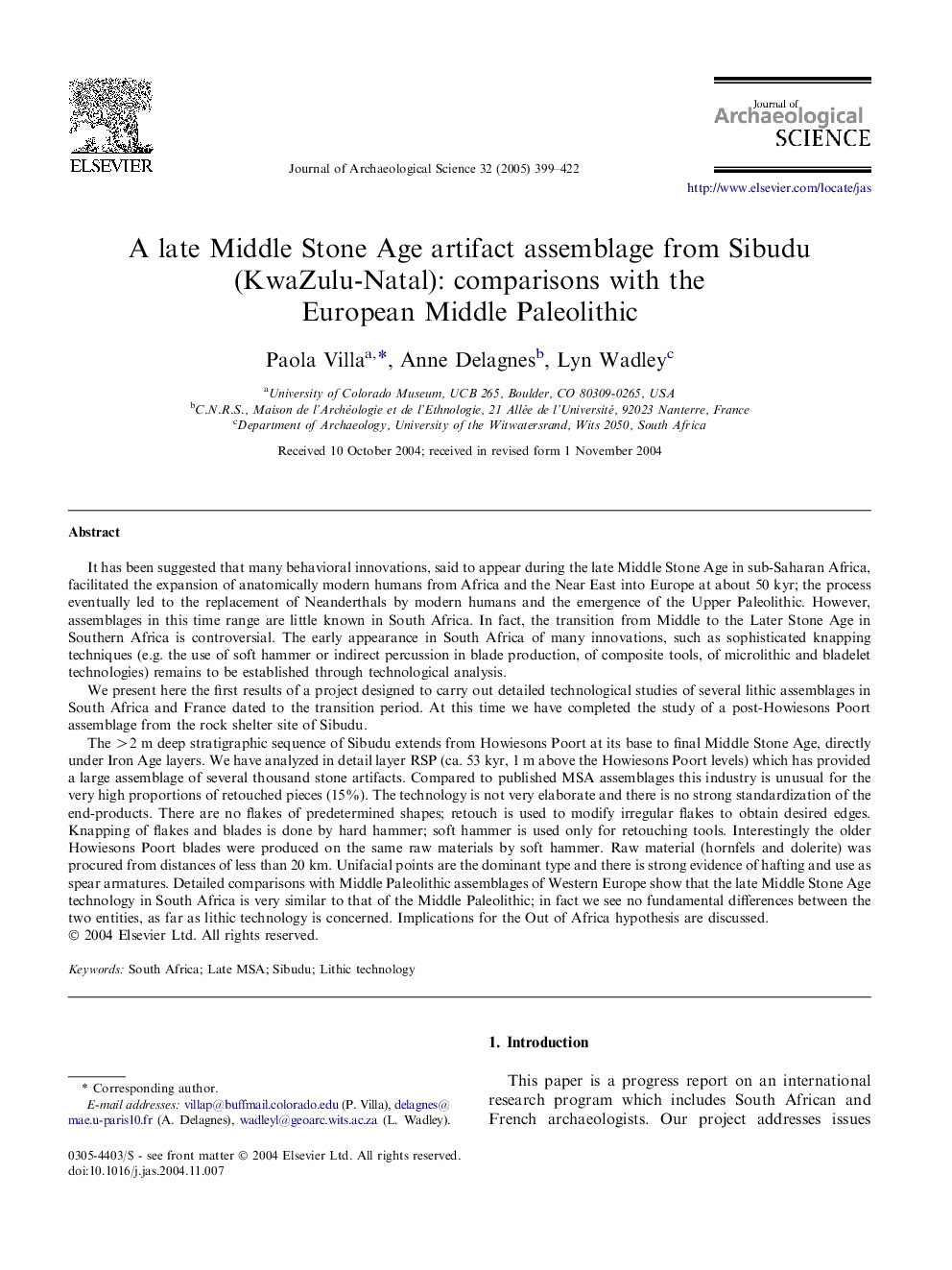| Article ID | Journal | Published Year | Pages | File Type |
|---|---|---|---|---|
| 10499531 | Journal of Archaeological Science | 2005 | 24 Pages |
Abstract
The >2 m deep stratigraphic sequence of Sibudu extends from Howiesons Poort at its base to final Middle Stone Age, directly under Iron Age layers. We have analyzed in detail layer RSP (ca. 53 kyr, 1 m above the Howiesons Poort levels) which has provided a large assemblage of several thousand stone artifacts. Compared to published MSA assemblages this industry is unusual for the very high proportions of retouched pieces (15%). The technology is not very elaborate and there is no strong standardization of the end-products. There are no flakes of predetermined shapes; retouch is used to modify irregular flakes to obtain desired edges. Knapping of flakes and blades is done by hard hammer; soft hammer is used only for retouching tools. Interestingly the older Howiesons Poort blades were produced on the same raw materials by soft hammer. Raw material (hornfels and dolerite) was procured from distances of less than 20 km. Unifacial points are the dominant type and there is strong evidence of hafting and use as spear armatures. Detailed comparisons with Middle Paleolithic assemblages of Western Europe show that the late Middle Stone Age technology in South Africa is very similar to that of the Middle Paleolithic; in fact we see no fundamental differences between the two entities, as far as lithic technology is concerned. Implications for the Out of Africa hypothesis are discussed.
Keywords
Related Topics
Physical Sciences and Engineering
Materials Science
Materials Science (General)
Authors
Paola Villa, Anne Delagnes, Lyn Wadley,
